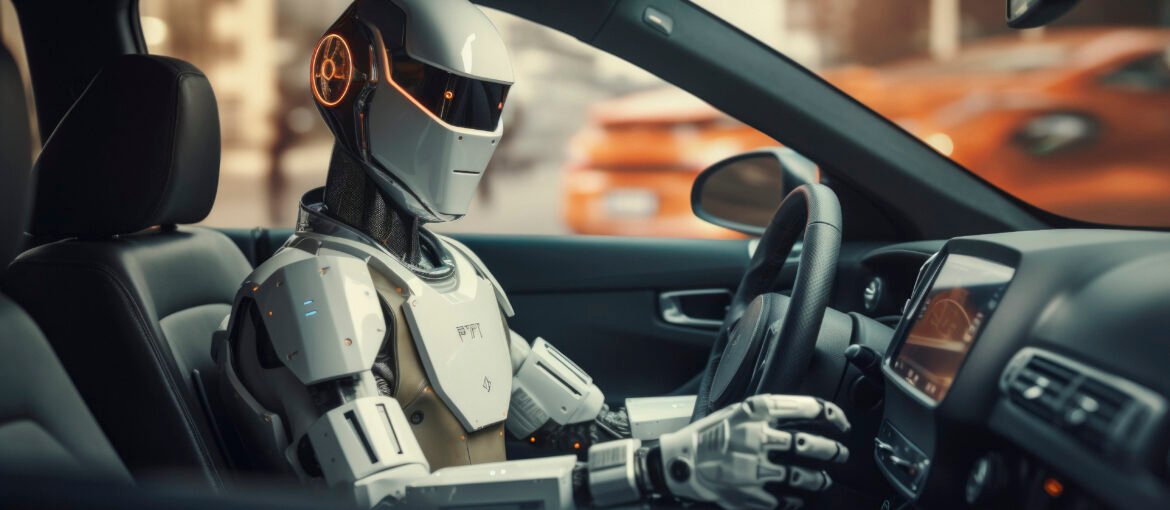The Role of Artificial Intelligence in the Future of the Automotive Industry
The automotive industry has long been a hub for technological innovation, and artificial intelligence (AI) is now leading the charge in transforming the future of mobility. From autonomous driving to predictive maintenance, AI is reshaping how vehicles are designed, manufactured, and operated. As the industry evolves, automakers are leveraging AI to enhance safety, improve efficiency, and revolutionize the driving experience.
Let’s explore seven key ways AI is transforming the automotive sector, pushing the boundaries of what’s possible in transportation and mobility.
1. Revolutionizing Autonomous Driving Technologies
Arguably the most high-profile application of AI in the auto industry is autonomous vehicles. These self-driving cars rely on complex AI systems to interpret data from sensors, cameras, and LiDAR, enabling them to navigate complex environments without human intervention.
Here’s how AI contributes to autonomous driving:
- Perception: AI processes real-time data from a vehicle’s surroundings, identifying objects, pedestrians, road signs, and other vehicles, enabling real-time decision-making.
- Path Planning: AI systems dynamically adjust the route, reacting to traffic conditions, road closures, or obstacles.
- Decision-Making: AI algorithms determine how the vehicle should respond in various situations—whether slowing down, changing lanes, or stopping at crosswalks.
Major automakers and tech companies are working tirelessly to bring fully autonomous vehicles to market. While challenges remain, AI is driving the evolution of safer, smarter, and more efficient autonomous systems.
2. Enhancing Driver Assistance Systems (ADAS)
While fully autonomous vehicles are still in development, AI-powered driver assistance systems (ADAS) are already enhancing vehicle safety and reducing human error. These features have become standard in many vehicles, helping drivers avoid accidents and making driving more convenient.
Key ADAS features include:
- Adaptive Cruise Control: AI monitors traffic conditions and adjusts speed to maintain a safe following distance.
- Lane-Keeping Assistance: AI detects lane markings and ensures the vehicle stays within its lane, preventing unintentional departures.
- Automatic Emergency Braking: AI analyzes surroundings and automatically applies the brakes if a collision seems imminent.
- Traffic Sign Recognition: AI reads and interprets road signs, alerting drivers to speed limits, stop signs, or upcoming hazards.
These systems are enhancing vehicle safety and bringing us closer to a future where cars actively protect their occupants.
3. AI-Powered Automation in Manufacturing
AI’s influence doesn’t stop at driving—it’s also revolutionizing vehicle manufacturing. In the automotive production process, AI streamlines operations, enhances quality control, and reduces costs through automation.
Key AI-driven manufacturing innovations include:
- Robotic Automation: AI-powered robots handle repetitive tasks like welding, painting, and assembly, improving precision and increasing efficiency.
- Predictive Maintenance: AI monitors manufacturing equipment health and predicts when repairs or maintenance are needed, minimizing downtime.
- Quality Control: AI analyzes images and data in real time, identifying defects or inconsistencies and enabling faster interventions.
AI is making production lines more efficient and adaptable, ensuring quicker turnaround times and greater flexibility in responding to consumer demands.
4. Optimizing Vehicle Design with AI and Machine Learning
AI is also transforming vehicle design, enabling automakers to create more efficient, safer, and environmentally friendly vehicles. By using AI and machine learning, automakers can streamline design processes and improve overall vehicle performance.
Here’s how AI is impacting vehicle design:
- Generative Design: AI algorithms explore numerous design possibilities based on parameters like weight reduction and improved aerodynamics, allowing engineers to discover optimal solutions faster.
- Simulation and Testing: AI-powered simulations model vehicle performance under various conditions, reducing the need for costly and time-consuming physical prototypes.
- Materials Optimization: AI helps identify the best materials for vehicle construction, balancing strength, weight, and cost.
These advancements are helping the automotive industry build better vehicles while cutting down on development time and costs.
5. Personalizing the In-Car Experience
AI is also enhancing the in-car experience, making it more personalized and intuitive. From voice-controlled systems to AI-powered climate control, modern cars are becoming increasingly aware of the preferences and needs of their occupants.
Here’s how AI is shaping the in-car experience:
- Voice Assistants: AI-powered voice assistants, like Amazon Alexa and Google Assistant, allow drivers to control navigation, media, and phone calls hands-free.
- Personalized Settings: AI learns driver preferences, automatically adjusting seat positions, mirror angles, temperature, and even selecting music or podcasts.
- Predictive Navigation: AI analyzes driving patterns, traffic conditions, and weather data to offer smarter route suggestions and real-time adjustments.
By enhancing comfort, convenience, and safety, AI is transforming how we interact with our vehicles.
6. Enhancing Fleet Management with AI
For businesses that manage large fleets, AI is crucial for optimizing operations and reducing costs. AI-powered fleet management systems track vehicle health, driver behavior, fuel usage, and maintenance schedules in real time.
AI-driven fleet management offers several advantages, such as:
- Predictive Maintenance: AI predicts when each vehicle will need maintenance, helping fleet managers avoid unexpected breakdowns and unscheduled downtime.
- Route Optimization: AI analyzes traffic, weather conditions, and delivery schedules to find the most efficient routes, minimizing fuel consumption and improving on-time performance.
- Driver Behavior Analysis: AI tracks driver habits like speed, braking, and acceleration, offering insights to improve safety and fuel efficiency.
For fleet managers, AI delivers powerful tools for optimizing fleet operations and cutting costs.
7. AI and the Future of Electric Vehicles (EVs)
As the automotive industry shifts towards sustainability, AI is playing a pivotal role in the development of electric vehicles (EVs) and supporting infrastructure. AI helps address the challenges related to battery performance, charging networks, and overall energy efficiency.
AI contributes to the EV revolution in several ways:
- Battery Management: AI optimizes battery life by managing charging cycles and improving range, extending the lifespan of EV batteries.
- Smart Charging Networks: AI helps locate and optimize the placement of charging stations, ensuring they are available where and when they are needed most.
- Energy Efficiency: AI systems maximize the energy efficiency of EVs by optimizing power usage in real-time, balancing driving range with performance.
By integrating AI, the automotive industry is accelerating the transition to electric vehicles, driving us towards a greener, more sustainable future.
AI: Driving the Future of the Automotive Industry
From self-driving vehicles to personalized driving experiences, AI is revolutionizing the automotive industry. As automakers continue to adopt AI-driven technologies, the benefits are clear: increased safety, better efficiency, and a more enjoyable driving experience. Whether improving manufacturing processes or enabling autonomous driving, AI is paving the way for a future where mobility is smarter, safer, and more sustainable.
As AI technology evolves, its influence on the automotive sector will only expand, unlocking new opportunities for innovation. The industry’s commitment to AI will ensure that the future of transportation is both exciting and efficient, creating a more connected and sustainable world.
By strategically implementing AI in the automotive industry, automakers are poised to deliver groundbreaking innovations that will define the next generation of vehicles and mobility solutions.


Leave A Comment